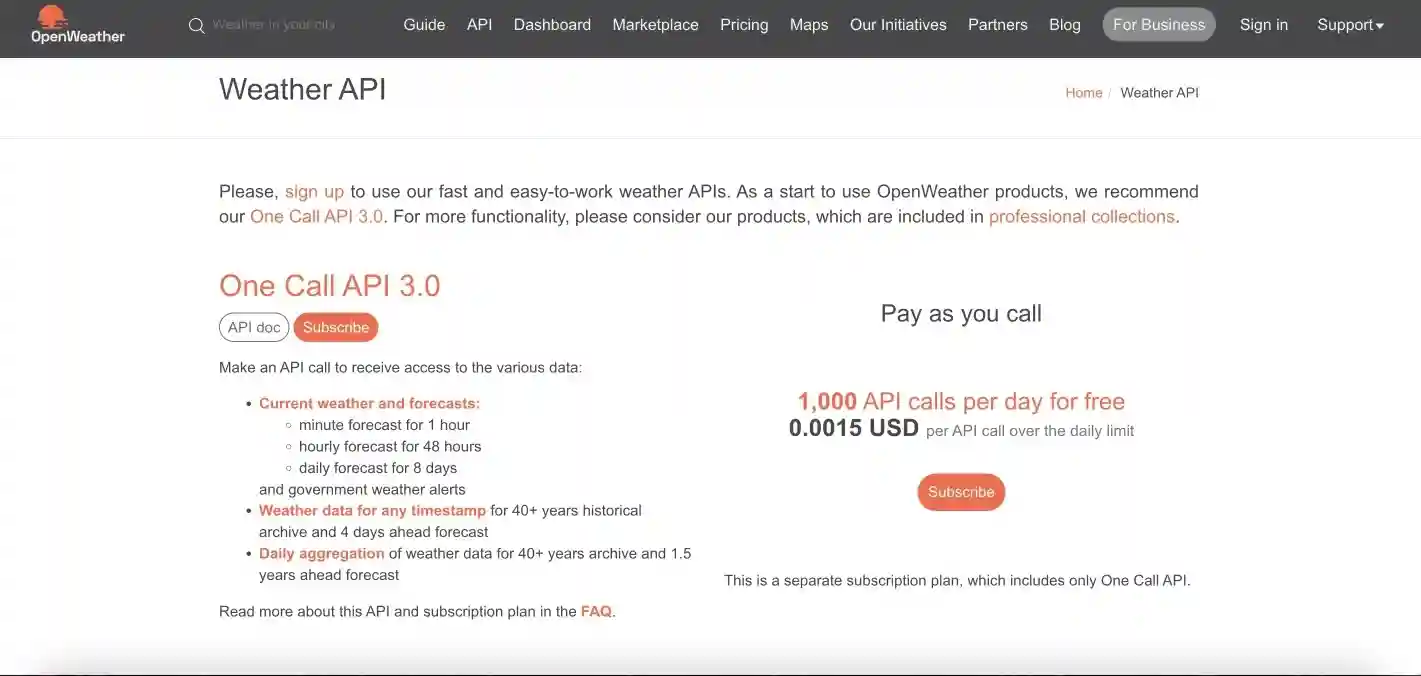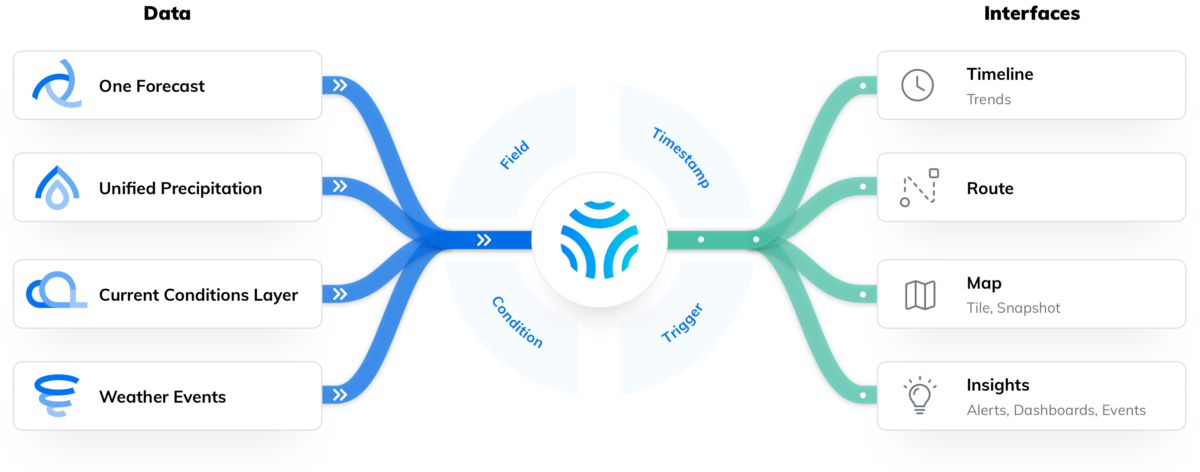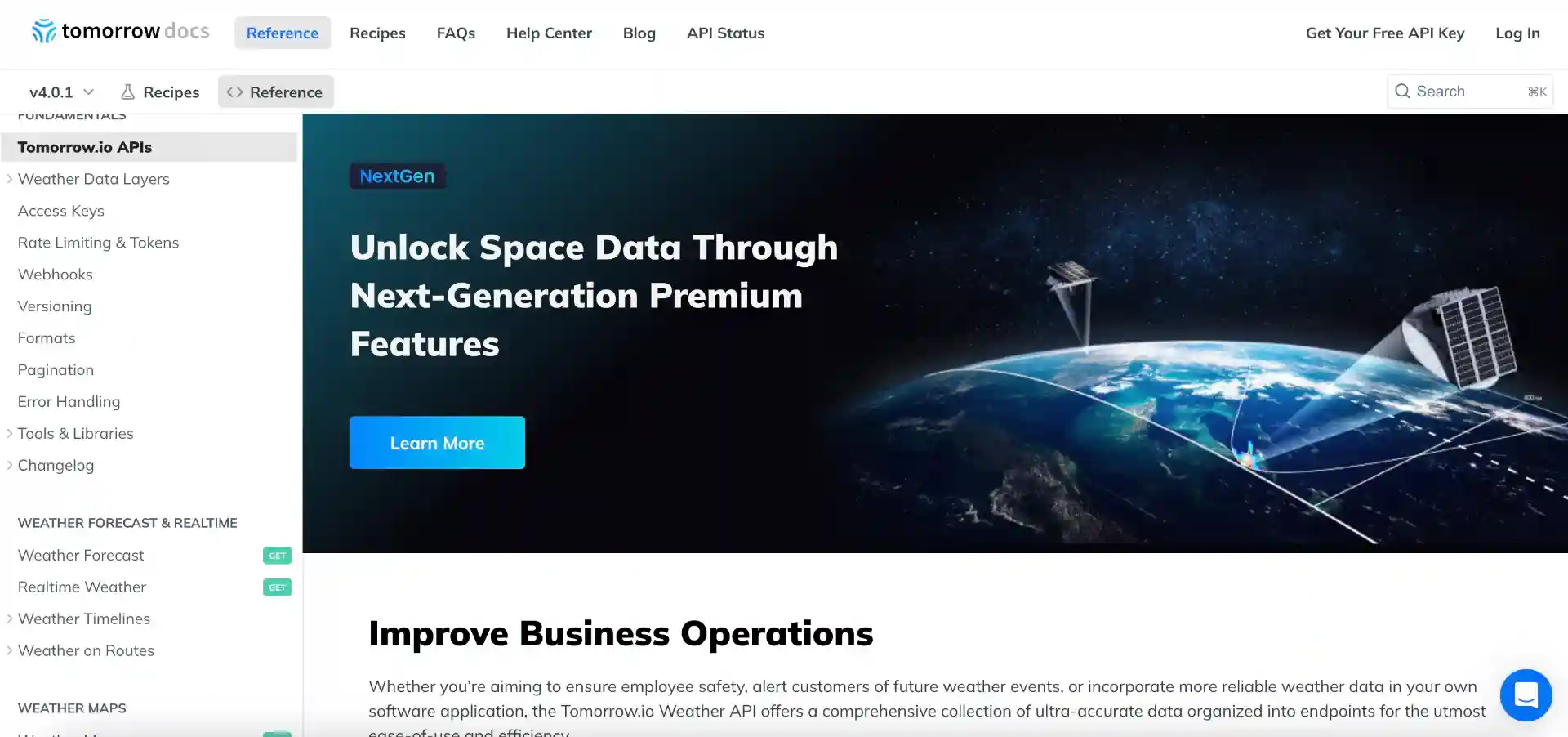TL;DR:
- Tomorrow.io and OpenWeatherMap are popular weather APIs that provide real-time, historical, and forecasted weather data for developers.
- Tomorrow.io offers comprehensive documentation, cutting-edge functionality, and machine learning-backed features, making it a seamless developer experience.
- OpenWeatherMap collects weather data from meteorological broadcast services and weather stations, but Tomorrow.io leverages advanced technologies for more accurate and reliable forecasts.
- Tomorrow.io’s Weather API is compatible with AWS, Autodesk, and other apps, while OpenWeatherMap is suitable for app integration.
- Tomorrow.io offers flexible pricing tiers, including a free plan, while OpenWeatherMap’s pricing is based on daily calls and specific data packages.
Tomorrow.io offers a seamless developer experience with comprehensive documentation, cutting-edge functionality, and machine learning-backed features. OpenWeatherMap collects weather data from meteorological broadcast services worldwide and a network of weather stations.
Weather forecasting technology has become increasingly important due to its direct impact on our daily lives.
Accurate weather forecasting can make a difference between a good or a bad day, and this importance is not limited to individuals planning their outdoor activities. Businesses and industries, including logistics, aviation, construction, mining, and more rely heavily on weather data to predict and prepare for weather-related events that can result in significant financial losses.
That’s why, many companies consider weather forecasting a crucial component of their operations and use weather data APIs to access real-time weather data.
This article will compare two popular weather APIs: Tomorrow.io weather API and OpenWeatherMap API, to determine the best fit for your business.
Why do you need a Weather API?
As a developer, you need a Weather API to access and integrate real-time, historical, and forecasted weather data into your applications. This includes temperature, pressure, humidity levels, wind speed and direction, UV index, and more.
Luckily, you can find free and paid options that offer different levels of access and varying calls per day. Two popular Weather API providers are Tomorrow.io and OpenWeatherMap, each with its own set of benefits and features for their customers.
Tomorrow.io vs OpenWeatherMap: Features
Tomorrow.io
Tomorrow.io’s Weather API offers a comprehensive all-in-one endpoint that gives developers access to weather data via 80 fields, including weather, air quality, pollen, road risk, and fire index.
Tomorrow.io offers historical weather, real-time current weather, and forecast weather data globally backed by hyperlocal weather data. Tomorrow.io’s lean and flat payload offers a seamless developer experience with comprehensive documentation, cutting-edge functionality, and machine learning-backed features.
Here’s what makes Tomorrow.io stand out from other available weather APIs:
- Offers an extensive data catalog with over 80 data layers tailored for various industries.
- Provides high-resolution and accurate weather data using proprietary models and AI/ML technology integrated with satellite data.
- Features a user-friendly interface and hassle-free integration, designed for easy access to weather data.
- Comes with comprehensive documentation for easier API integration by developers.
- Allows customizable solutions, giving users the flexibility to select weather data layers and solutions specific to their location and use case.
- Delivers innovative aggregation options and a valuable tool for industries requiring precise weather information.
OpenWeatherMap

OpenWeatherMap Weather API Information
OpenWeatherMap another available weather API and is a popular choice for accessing high volumes of weather data. In contrast, to Tomorrow.io, OpenWeatherMap collects weather data from meteorological broadcast services worldwide and a network of weather stations.
With the OpenWeatherMap API, developers can access current weather information for locations around the world. This includes real-time temperature, humidity, wind speed, and atmospheric pressure readings.
OpenWeatherMap also offers an extensive range of features such as support for multiple languages and units (metric, imperial), imagery (satellite images and maps), alerts, geocoding/reverse geocoding, and air pollution.
While OpenWeatherMap may claim to have more accurate and reliable weather data, Tomorrow.io’s Weather API leverages advanced technologies such as machine learning and AI to provide highly accurate and reliable weather forecasts, ensuring that businesses and developers can make informed decisions based on the most up-to-date information.
OpenWeatherMap also offers a feature-limited free option to access the 5 days/3 hour forecast API, weather alerts, and a weather map, its premium plans are more expensive than Tomorrow.io’s.
Learn more about their pricing here.
Tomorrow.io vs OpenWeatherMap: Compatibility
Tomorrow.io’s Weather API supports REST Weather API using JSON for the requests and the responses, with HTTPS support and is compatible with AWS, Autodesk, and other apps. It also provides developers with additional features like polygon/polyline locations, monitoring and alerts, and dynamic routes, allowing them to choose the right bounding box to continuously observe inclement weather within that specific lat/long vicinity.
The OpenWeatherMap API is compatible with JSON/XML and is suitable for app integration.

How Tomorrow.io’s Data & Interface Combine for the Tomorrow.io Weather API
Tomorrow.io vs OpenWeatherMap: Ease of Use
Tomorrow.io’s Weather API offers a seamless developer experience with comprehensive and detailed documentation, cutting-edge functionality, and trusted API features. Its lean and flat payload makes it easy to use, and the resulting output is hyperlocal weather monitoring that provides users with accurate, actionable weather forecasts. Tomorrow.io has also recently launched a premium version of their weather data called NextGen that is beginning to ingest data coming from Tomorrow.io’s first two commercially built radar satellites.
Backed by its weather intelligence engine, Tomorrow.io’s API is trusted by top companies such as Uber, JetBlue, National Grid, AWS, Ford, and more.
OpenWeatherMap also offers their own documentation
Tomorrow.io vs OpenWeatherMap: Pricing
Tomorrow.io offers flexible pricing tiers, including a free plan and an enterprise plan with flexible monthly rates. The free version of the API alotts users with up to 500 API calls per day.
Its pricing model is based on the number of API calls, and it offers discounts for annual commitments.
In contrast, OpenWeatherMap’s pricing model is based on daily calls, limiting your app to 60 calls per minute. They also offer various data packages based on specific data collections that you must purchase before using. The OpenWeatherMap API is priced based on individual locations, driving up costs if you’re looking to monitor more than one location.
Weather API Use Cases
Weather APIs play a crucial role in optimizing operations and strategies for many industries. Here are just a few examples of weather API applications.
Agricultural Businesses
Agricultural businesses utilize weather APIs to compare weather conditions and make informed decisions about planting, watering, and harvesting schedules based on regional weather and climate variations. By accessing accurate, hyper-local, and real-time weather data, these businesses can optimize their operations and increase productivity.
Retail & Advertising
Similarly, the retail industry benefits from weather APIs by leveraging weather patterns to optimize inventory management and marketing strategies.
By analyzing weather data, businesses can adjust their inventory levels and promotional activities based on anticipated changes in consumer demand due to weather conditions.
Drones
Businesses operating drones, are the mercy of the weather. Understanding how weather will impact drone operations is crucial to meeting video shoot schedules, scoping out areas, and drone delivery. With a weather API, drone businesses can understand low-level wind data and how they can operate despite varying wind levels.
Weather APIs provide businesses with valuable insights into regional climate variations and weather patterns, allowing them to make data-driven decisions. By incorporating weather data into their operations and strategies, any industry can enhance their efficiency and profitability.
Choosing Your Weather API Provider
Accurate weather forecasts are essential for industries like transportation, aviation, construction, and mining to operate efficiently.
Tomorrow.io’s Weather API provides 80 different data fields, including weather, air quality, soil moisture, and soil temperature, and features minute forecasts, hourly forecasts, daily forecasts, and future forecasts globally. Its lean and flat payload and comprehensive documentation make it an easy-to-use and reliable solution.
With flexible pricing plans and compatibility with a wide range of weather forecasting apps and mobile applications, Tomorrow.io’s Weather API is the clear choice for your application.




